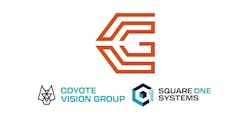June 13, 2018—PPG announced Tuesday that it will introduce a low-energy paint process for OEMs during the inaugural SURCAR North American Congress, June 13-14.
PPG representatives will introduce a low-energy paint system developed through Project LEAPP, the company’s global initiative to help OEMs reduce paint shop capital requirements and operating costs. Approximately 70 percent of total energy consumption at an automotive assembly facility currently takes place in the paint shop.
The new paint process, which was developed in collaboration with Dürr Systems, Inc., can help reduce energy consumption by up to 39 percent by permitting a significantly lower curing temperature and faster flash and dehydration times. The process features a next-generation PPG waterborne crosslinking chemistry that cures at 80 degrees Celsius—compared to 140 degrees Celsius for current systems—and can reduce flash and dehydration requirements by several minutes per vehicle.
The new system can enable OEMs to reduce the physical footprint of their paint shop operations because fewer ovens are needed and cure temperatures are lower. In addition, the ability to coat metal and heat-sensitive parts such as plastics and composites at the same time can simplify the manufacturing process.



